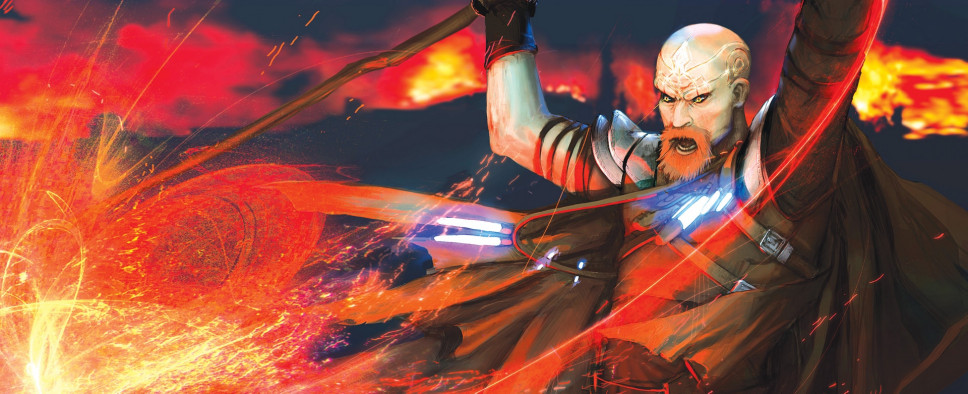Neverwinter Nights 2: Mask of the Betrayer Retrospective
-
Category: News ArchiveHits: 5150

It's hard to believe but Mask of the Betrayer, the phenomenal first expansion for Neverwinter Nights 2, celebrated its tenth anniversary a few months back. Not willing to let this occasion go by without anyone noticing, the creative lead on the project George Ziets took to his personal blog to look back, reminisce, and analyze what made Mask of the Betrayer work.
Reading the resulting retrospective, I found myself wholeheartedly agreeing with his points about not forcing themes into fiction just for the sake of it. I was also befuddled by how little time the developers usually get to create stories for their games - half a year is considered to be really long, while a week is not seen as unrealistic. And in general, it's a great read all around and I simply can't recommend it enough. Here are a few paragraphs to get you started:
The story took a really long time to write.
I started work on the Mask narrative in late spring / early summer of 2006, while the NWN2 team was still in the “polish and bug-fixing” phase. The first few months were mostly brainstorming. I had freedom to do pretty much anything with the narrative, so it took me a while to settle on a hook that I really liked. For a while, the player was going to become a minor deity at the beginning of the game, and the expansion would focus on the travails of a new deity in the Forgotten Realms universe… but it quickly became clear that we didn’t have the budget to create all the new creatures, items, and game systems to support a deity-level campaign. So I kept thinking about other ways to make the expansion a unique experience, and I finally settled upon the spirit-eater curse – a magical affliction that would give the player some near-godlike abilities but could still take place (mostly) in the mortal world.
Even after that first major decision was made, I spent weeks reading through Obsidian’s library of Forgotten Realms sourcebooks, picking out elements that got me excited (the Wall of the Faithless, the lore of Rashemen and Thay), and then figuring out how to weave together a story that would incorporate them all.
That was a long and intensive process, with tons of rewrites, tweaks, and iterations. For the whole second half of 2006, I probably didn’t have a spare moment when I wasn’t thinking about the story, going over and over it in my head, and trying to think of ways to make it better. Mask’s narrative wasn’t truly finished until December 2006, when the first zone of the game (Okku’s barrow) was already underway.
Don’t get me wrong - that grueling, painstaking process was totally worth it – the story wouldn’t have been as strong if I hadn’t put in all that time. In my experience, memorable stories take a lot of deep thought and iteration, and if you don’t have the time (or your schedule doesn’t allow for it), your story may be decent, but it likely won’t be great.
I’ve worked on some games where the story needs to be developed in a very short time – e.g., a week or less. It’s possible to craft a simple, competent narrative in that time, but the chances are good that you’ll still need to iterate a lot during development to make it stronger, and your game will probably not be remembered for its story.
I find that the time required for story and world development are often underestimated in the games industry, though studios that have made a lot of narrative-focused games are starting to schedule more realistically. (Still, the realities of game development, like publisher contracts, don’t often allow for sufficient story development time, which is part of the reason that a lot of game stories aren’t that great.)
On Mask, it also helped that we dedicated one writer (me) to craft the high-level story AND write all the main story dialogues. Sometimes division of responsibility is unavoidable, but if one person has the high-level vision for the game’s narrative, it’s much easier for that person to write all the story moments. They know exactly what needs to be communicated and what the player has already learned, so they can carefully control the flow of information to the player. If the main story is divided up between multiple writers, information flow can become a major problem… and a source of confusion for the player.

